As you’ve seen from my recent Biodiversity Collage posts, I have gotten into serious games as tools for teaching. Today, I am reading up on a different game, the Climate Fresk (which I also got introduced to when I got to play it in a workshop led by my awesome colleague Léa Lévy, and which she and colleagues have evaluated as teaching tool in our context). Let’s see what experiences other people have had with it!
Tag Archives: teaching for sustainability
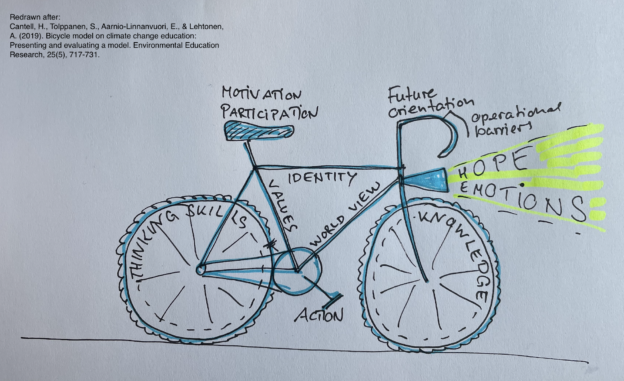
Currently reading “Bicycle model on climate change education: Presenting and evaluating a model.” by Cantell et al., 2019
Came across this model, had to share! You know I love me a good visualization of a model, and I think this one is brilliant to help support thinking about sustainability teaching in a holistic way!
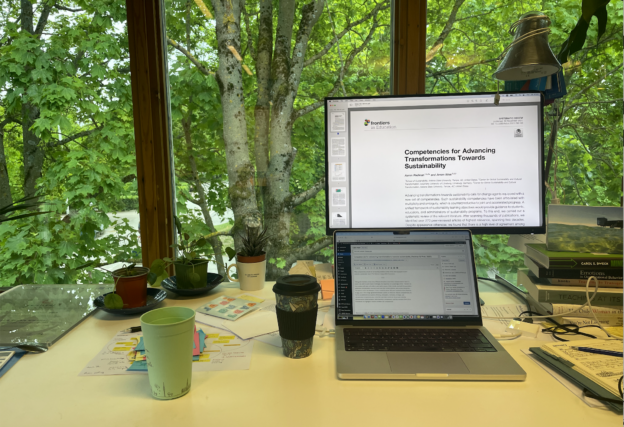
Currently reading: “Competencies for advancing transformations towards sustainability” (Redman & Wiek, 2021)
What competencies should we be teaching students so they will be best equipped to work towards a sustainable future? The (really useful, me thinks!) Redman & Wiek (2021) framework.
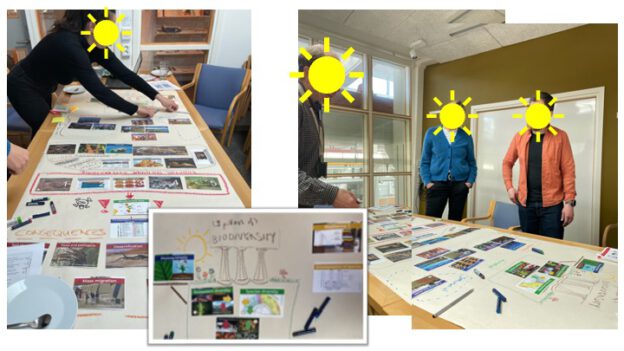
I can now facilitate the “Biodiversity Collage”!
I’m now an official trained facilitator of the Biodiversity Collage (that I wrote about here)!

“The Biodiversity Collage” — a fun and collaborative workshop to explore the biodiversity crisis, but leave hopeful and ready to tackle the challenge
My awesome LTH colleague Léa Lévy invited me to a workshop she was doing with some of her colleagues yesterday, where we played a serious game on biodiversity in order to test if it might work as a teaching tool in their context. The game, “The Biodiversity Collage“, is about collaboratively organizing a growing deck of cards on different aspects of biodiversity: what biodiversity depends on, how we as humans make use of it in different ways, how our actions put pressures on the system, and what consequences those pressures ultimately lead to.
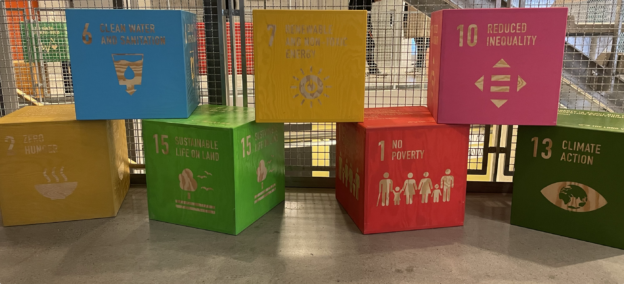
Wamsler et al. (2021)’s literature review on “Linking internal and external transformation for sustainability and climate action”, and “Inner Development Goals”
Especially when it comes to teaching about climate change or sustainability more generally, it seems unavoidable to really consider mental states. While the dominant discourse around climate change has been about external, biophysical factors for a long time, and climate change was thus seen as a challenge that can be solved by technology and policy changes and does not require any other real changes from us, this view is currently changing towards one that considers internal “mental states”. The climate crisis is then a human relationship problem that cannot be separated from other crises like hunger, poverty, or the covid-19 pandemic, and that is inadvertently caused by internal issues like racism, injustice, consumerism. So fixing the climate crisis requires changes in the way we all think about the world and live our lives: We need to reconsider our values, beliefs and worldviews in order to change the way we act.
Wamsler et al. (2021) review the literature to develop an integrated model of change that explains the interaction of internal and external changes for sustainability.

More “head, hands, and heart” in sustainability education, this time by Öhman & Sund (2021)
Talking about sustainability teaching, one model that seems to resonate with many teachers I speak with is the “Head, hands, heart” model by Sipos et al. (2008). I came across basically the same thing now in an article by Öhman & Sund (2021) as a model for sustainability commitment.

Thinking about emotions and teaching about sustainability
In communicating about climate change specifically, and other sustainability challenges, there is often the debate around how to kickstart people into action. Paint the doom-and-gloom (i.e. realistic) picture so people will act out of fear (and I just recently wrote about how anger can be a constructive emotion leading to action), or draw more positive pictures so they feel hopeful and that they can make a difference, and therefore don’t get paralyzed?
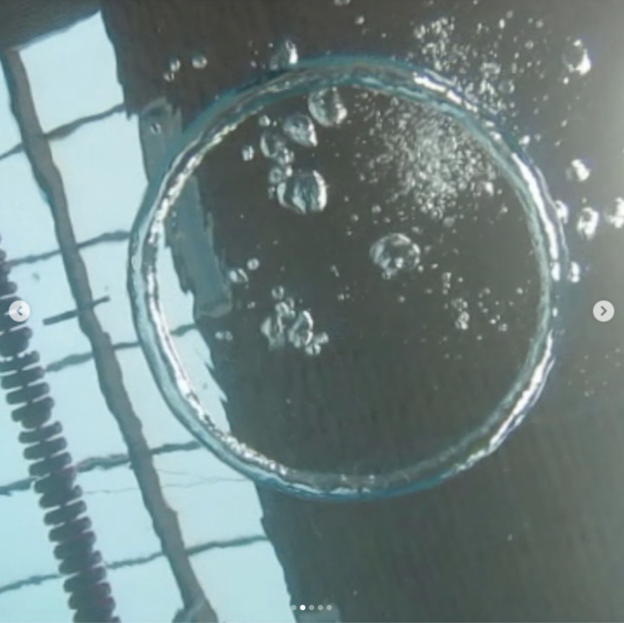
Breathing practice: Where freediving and academic development collide
I recently wrote a lot about the emotions that we experience when really thinking about sustainability and the challenges that we face when we take it seriously (e.g. here), and of course experiencing negative emotions like feeling anxious or hopeless or angry is not only happening to our students, but also to us. I attended a seminar on “the sustainable teacher” yesterday and one suggestion that came out of that in order to help us work towards “inner sustainability”, was to include mindfulness meditation practices in our own and our students’ lives. And this reminded me of an article I recently read on breathing practice (which I find interesting from a completely different perspective, being a hobby freediver) in comparison to mindfulness meditation, where it turns out that breathing practice can be as effective or better than mindfulness meditation. So what if we included breathing practices in our teaching?

From “education for sustainable development” to “education for the end of the world as we know it” (reflecting on Stein et al., 2022)
A lot of things are happening around teaching sustainability at LU right now! As I am planning the second iteration of my “teaching sustainability” course, I am reading more about what we actually mean by “teaching sustainability”. It is clear that this is not a good title for my course, but we haven’t come up with a better one yet, and I think me struggling with finding a good name is a symptom of me struggling with what the essence of that course is. I don’t want my course “just” to be about how to teach about the SDGs or problems or solutions, it needs to be bigger than that. But then how to make sure there is still a clear focus?